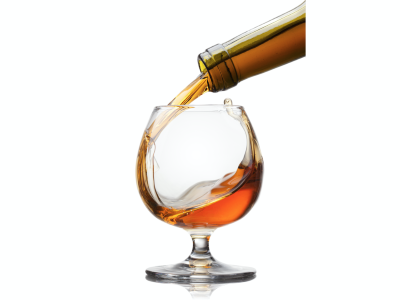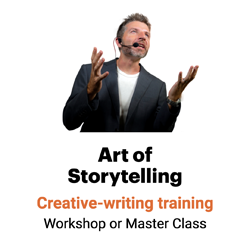‘How we make it’ and 4 other ways to find a brand narrative
The other day, my wasband came home with a bottle of Kelt — not his usual cognac. When I asked why he’d switched brands, he pulled out the box and started reading:

In the 20th century came the age of brands. This meant the spirits were shipped in bottles rather than in oak barrels. The magical effect of the sea was lost as a spirit does not mature once it is bottled.
Kelt has revived the tradition … We send our already aged spirits, still in oak barrels, on a three-month sea voyage around the globe. This, the Kelt Tour du Monde, creates a unique spirit and restores an aspect of quality lost for almost a century.
My wasband takes his cognac seriously. Why did he change his brand? The story made him do it.
Whether you’re writing social media or blog posts, content marketing pieces, stories on your website or even your mission statement, you can connect with your target audience with a great brand story. Brand storytelling can help you sell products, services, programs and ideas.
The good news is, your brand story probably already exists. In fact, you may already be telling it. Here are four ways to spot a good story that might be right in front of your eyes:
1. Tell your inception story.
The trucking insurer Great West Casualty Company makes its inception story part of its brand:
As truckers crossed the bridge, Joe would jump up on the running boards of the trucks and offer the services of the Motor Carriers Services Bureau.
From that time on, a partnership with trucking professionals and a tradition of service were firmly ingrained within Great West.
From Nike to Warby Parker, inception stories can form the foundation of a brand’s storytelling. Show how your company solved a problem, challenged the status quo or turned an industry on its head.
Whether you’re working for a multinational or a nonprofit, helping small business owners or building your personal brand, ask, “What’s my inception story?”
2. Share your product’s history.
Want a little drama to go with your drink? I read this story off a bottle of Blenheim water:
Must be something in the water. Perrier also tells its interesting history, including these highlights:
- In 218 B.C., Hannibal’s army camped out by a carbonated spring in what is now Provence in southern France.
- In 58 B.C., Julius Caesar’s soldiers built a stone basin at the site. They drank the water and bathed in it for its healing powers.
- In 1863, Napoleon signed a decree acknowledging that the spring contained natural mineral water. Health-seekers flocked to the spa.
Today, the spring is the source of Perrier, the most popular bottled water in history.
We can’t all claim that Julius Caesar used our product. But most of us can reveal interesting stories from our product or services’ past.
3.Tell the stories behind the lists.
Too often, communicators cover employee awards by running lists of winners’ names. But that reduces the drama of human achievement to a series of bullet points and a few dry words.
Instead, take a tip from FedEx World Update, and run mini stories about award winners. In boxes throughout the magazine, the editors cover the company’s Humanitarian Awards with stories like these:
Roberts then proceeded further into the business, entering a back room where he heard a faint voice coming from inside a safe. He opened the safe and found the owner, whose hands were secured with duct tape during a robbery. The owners would have suffocated in the safe if Roberts had not continued his search …
Now there’s a real story that connects with your audience. Substitute drama for lists … and give award winners the attention they deserve.
4. Tell your process story.
I first fell in love with St-Germain over a Poivre (St-Germain, pear vodka, champagne) at Luke in New Orleans. Had my wasband’s cooler head not prevailed, I would have retired on the spot and devoted the rest of my life to savoring these luscious cocktails.
My second meeting with my new best friend occurred over appetizers on our foodiest friends’ deck, where they topped the elderberry liqueur with Prosecco.
That’s where I read St-Germain’s process story, delivered in a gorgeous little booklet attached to a bottle right out of a 19th-century French perfumerie. Here’s the story:
The blossoms in question are elderflowers, the man un bohemian, and the cocktail a stylishly simple creation made with St-Germain, the first liqueur in the world created in the artisanal French manner from freshly handpicked elderflower blossoms. …
After gently ushering the wild blossoms into sacks and descending the hillside, the man who gathers blossoms for your cocktail will then mount a bicycle and carefully ride the umbels of starry white flowers to market. Vraiment.
There are no more than 40 or 50 men such as he, and in a matter of days they will have gathered and bicycled to us the entirety of what will become St-Germain for that year. You could not write a better story if you were François Truffaut.
No, you could not.
Since Coors differentiated its beer through a process story — it was the only major brand to use cold filtration rather than pasteurization — companies have been building their brands by telling the stories behind their processes.
Sometimes “how we make it” can make a great dramatic narrative. What’s your process story?
Learn how to tell a process story.
What’s your brand story?
Create a brand story that supports your brand personality and builds an emotional connection with potential customers.
Finding your brand story isn’t hard if you know where to look. From company history to employee achievements, from how we got started to how we make it now, your successful brand story is just waiting to be told.

Leave a Reply